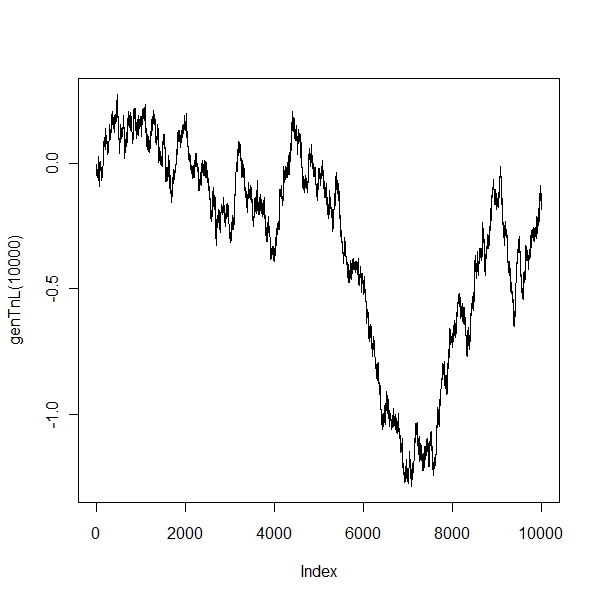Brownian Motion Converges to Std Normal
Purpose
If you take a symmetrical random walk and scale it, it becomes a browninan motion.
> par(mfrow = c(1, 1))
> library(ConvergenceConcepts)
> genTnL <- function(n) {
+ delta <- 1/n
+ ds <- sqrt(delta) * rnorm(n)
+ S <- cumsum(ds)
+ Z <- S/(sqrt(delta) * sqrt(n))
+ return(Z)
+ }
> plot(genTnL(10000), type = "l") |

The above clearly shows that as you increase sample paths, the scaled brownian motion converges to a standard normal.